A dive into the eight crown-owned parks across London
Within the city of London, there are eight Royal parks. Originally these grounds were used as personal areas for the Crown, mostly for leisure and hunting. The parks are now owned by The Royal Parks, a charity charged with the management of the 5,000 acres of parkland. Every park is free to use and if you’re looking for a place to walk and enjoy the scenery just put on your shoes pick a park and head towards these green open spaces.
Kensington Gardens:
Kensington Gardens is one of London’s most famous royal parks, it is the private garden of Kensington Palace and sits just along Kensington, Chelsea, and the city of Westminster. With Gardens covering 265 acres it is part of London’s “green lung” which is a mixture of parks including Hyde Park, Green Park, St. James’s Park, and Kensington Gardens.
Location:
Towards the west of Hyde Park which is where the Albert memorial and Serpentine gallery is located.
Background:
Originally Kensington Gardens was a part of Hyde Park. It was made for the purpose of a hunting ground for the personal use of Henry VIII. Later on, Queen Caroline who was the Queen of Great Britain at the time separated it from Hyde park in 1728 and was designed by Charles Bridgman a famous architect, Charles then used the space to create a landscape garden, a Dutch garden, and a round pond.
Attractions:
The Peter Pan statue is one of Kensington garden’s most famous attractions showcasing a large statue of Peter Pan that had been commissioned in 1912. The Albert Memorial is also one of Kensington Gardens’ most prized attractions, A beautiful monument that was made after the death of Prince Albert. One of Kensington Gardens’ most famous attractions for children is the Diana memorial playground, which has a massive pirate ship, teepees, and a beach surrounding the ship.
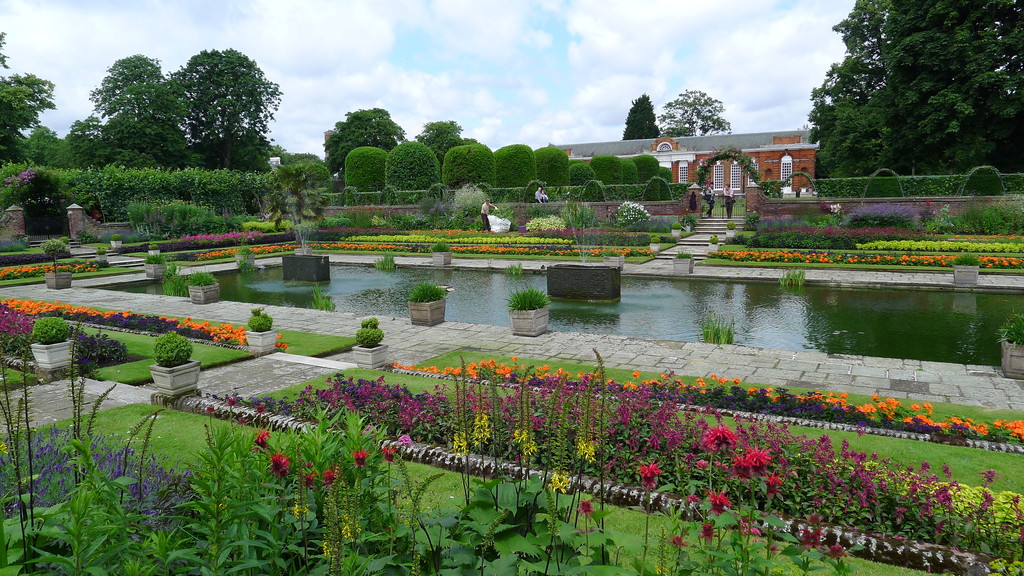
Image by: Wikimedia Commons
Hyde Park:
Located in the heart of the city, Hyde Park is officially the largest park relative to its four counterparts that form around the city centre from Kensington Palace all the way to Buckingham Palace. Over 350 acres, the park has multiple different attractions and long walking areas.
Location:
North of Bayswater, east of Park Lane, south of Knightsbridge.
Background:
Hyde Park was originally founded by Henry VIII during the time of 1536. This park was taken from Westminster Abbey. The park served as a private hunting ground for the Crown. From the year 1637 onwards it became a public park for the people of London.
Attractions:
The rose garden within Hyde Park is a must-see attraction. You can find it on the southeast corner of the park. Filled with many different plants and beautiful flower beds. Another spectacular attraction is the wildlife within Hyde Park. With a large variety of birds and insects, if you are an animal lover you must check this out. The serpentine a 40-acre man-made lake is one of the best attractions any park in London has to offer, with many restaurants, bars, and walking paths along with it.
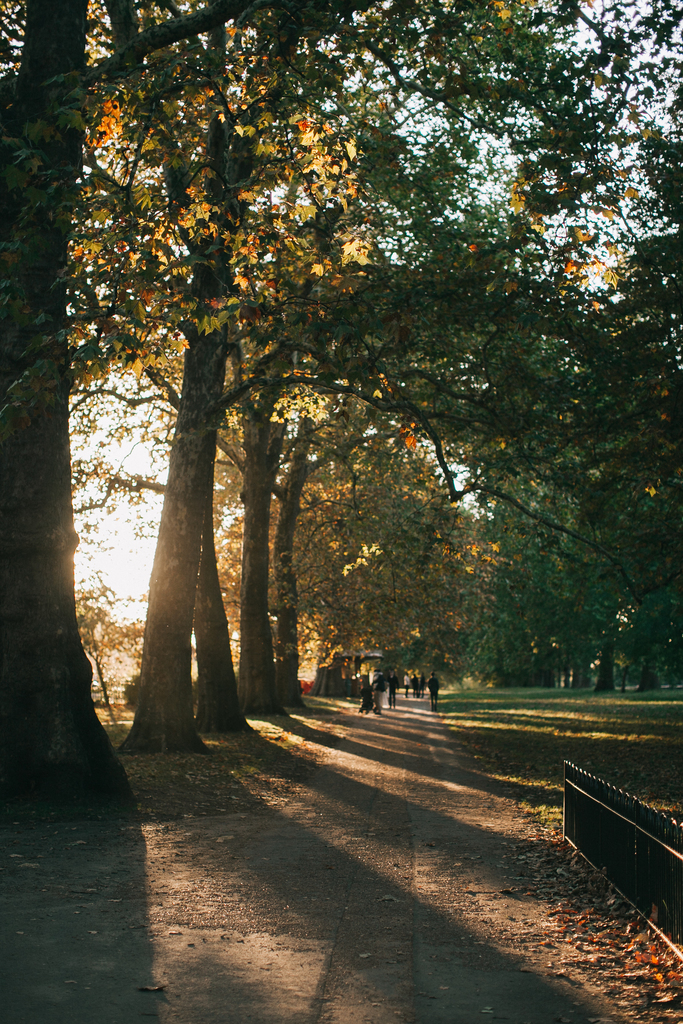
Image by: Lina Kivaka (Pexels)
Richmond Park:
Located in the London Borough of Richmond-upon-Thames, this is officially the largest park of all the royal parks. It is so large that it almost covers all the other park’s total acres together. Richmond Park stretches across 2,360 acres of parkland. This is not only a park but also serves as wildlife conservation due to the immense amounts of animals in this reserve. The park also include multiple different structures and buildings. It is home to several of the Southeast’s ancient trees and has a diverse range of wildlife species and plants.
Location:
London Borough of Richmond-upon-Thames
Background:
Charles I had used Richmond Park in order to escape a deadly plague in London around the year 1625. He built Richmond Palace and then used this large piece of land as a hunting ground for the red and fallow deer. After Charles I was executed at the end of the English Civil War, in 1949, the park was turned over to the City which till today is open to the public.
Attractions:
Richmond Park’s main attraction is their wildlife, with deer and other animals running around it’s great just to watch the animals doing their thing. They also have one of the most amazing gardens known as the Isabella Plantation which is filled with stunning flowers, trees, and flower beds. Kings Henry’s Mound is also a go-to spot for the views you can see once you reach the mound is amazing, you can see the Thames valley and St. Paul Cathedral.
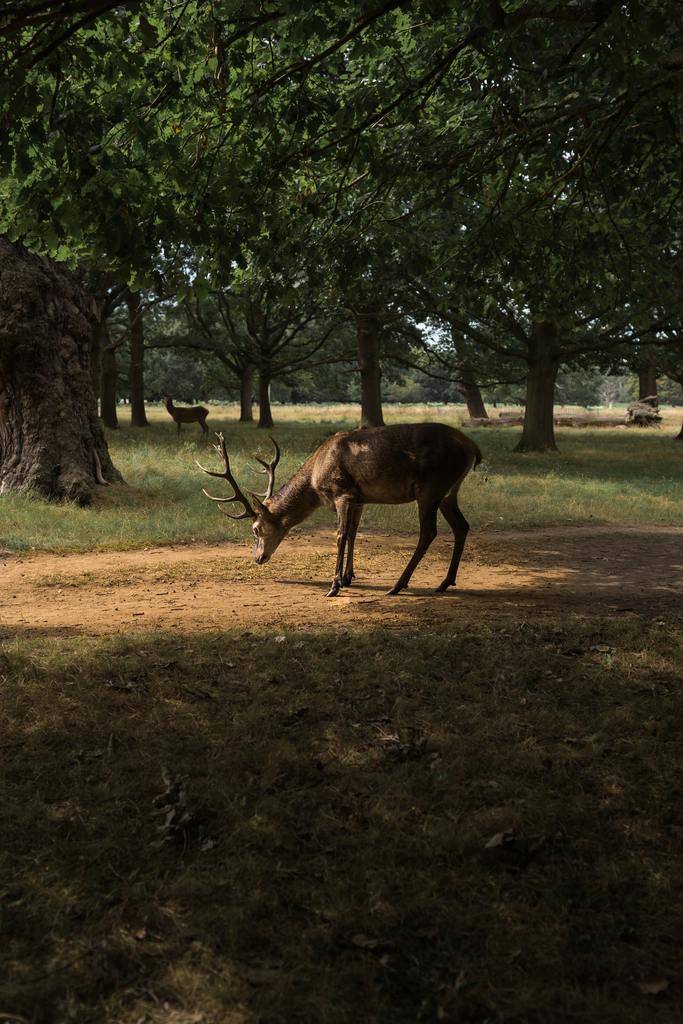
Image by: Marek Mucha (Pexels)
Bushy Park:
The second-largest park of the eight royal parks is Bushy Park. Spread over a total of 1,100 acres the park holds many attractions. Bushy park traces its origins all the way back to Medieval England and till today lay remains of medieval farming ways. Known for its multiple waterways and gardens, this attraction is absolutely breathtaking and a must-go for park lovers.
Location:
North of Hampton Court Palace, West London.
Background:
This park dates all the way back to Bronze Age and medieval times. It was taken from Hampton Court Palace and gifted to Henry VIII. This area was used as a sporting ground for the royal family. After his death, the park went through many changes which involved adding features, rivers, ponds, and avenues. This park also served as a hospital in the First World War and as an airbase during the Second World War.
Attractions:
Bushy Park is mainly known for two things, its waterways, and wildlife. So if you’re visiting this park you must go see their resident deers and birds. The Longford River is also a great site to see, stretching over twelve miles it’s hard to miss.
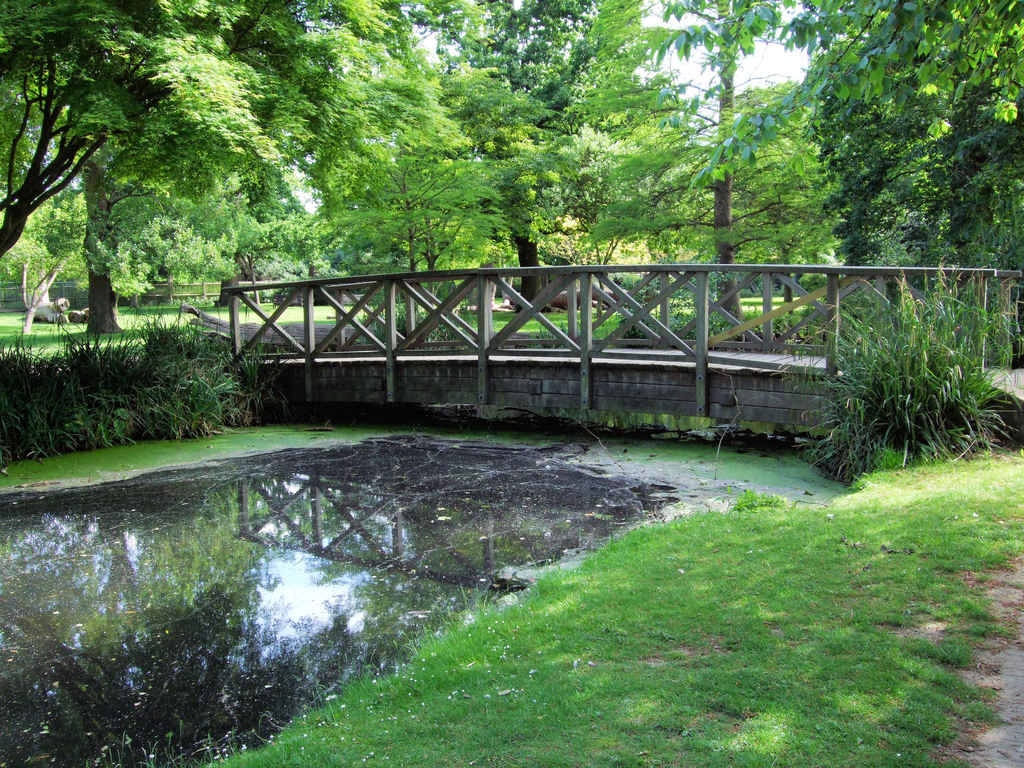
Image by: Jim Linwood (Wikimedia Commons)
St James’s Park:
Stretching over 57 acres and bound to Buckingham Palace lies St James’s Park. One of London’s most famous parks due to its close proximity to Buckingham Palace, the current resident of the British monarch. With views of the Royal Palace, flower beds, lakes, and pelicans (which were brought as a gift from the Russian Ambassador). St James’s Park is a great place to go visit.
Location:
South West London, adjacent to Buckingham Palace.
Background:
This park was originally owned by Eton College and was first considered marshland. In 1532, Henry VIII bought the land from the college and converted it into a royal park. The king bought this land for the sole purpose of self-enjoyment to make York Place (later known as the Palace of Whitehall) fit for a king. From there James I converted the marshlands into a park by landscaping and draining the area and adding animals. The park originally had many exotic animals like crocodiles and elephants. Later on, Charles II decided to revamp the park again after visiting France and opened the park to the public.
Attractions:
One of St James’s Park’s biggest attractions are its pelicans. They were given as a gift from a Russian ambassador and since then they live on the property. The park is also surrounded by Buckingham Palace, Clarence Hall, and Whitehall. If your looking for a nice view, the blue bridge is just for you offering views over Buckingham Palace and St James’s Park lake.
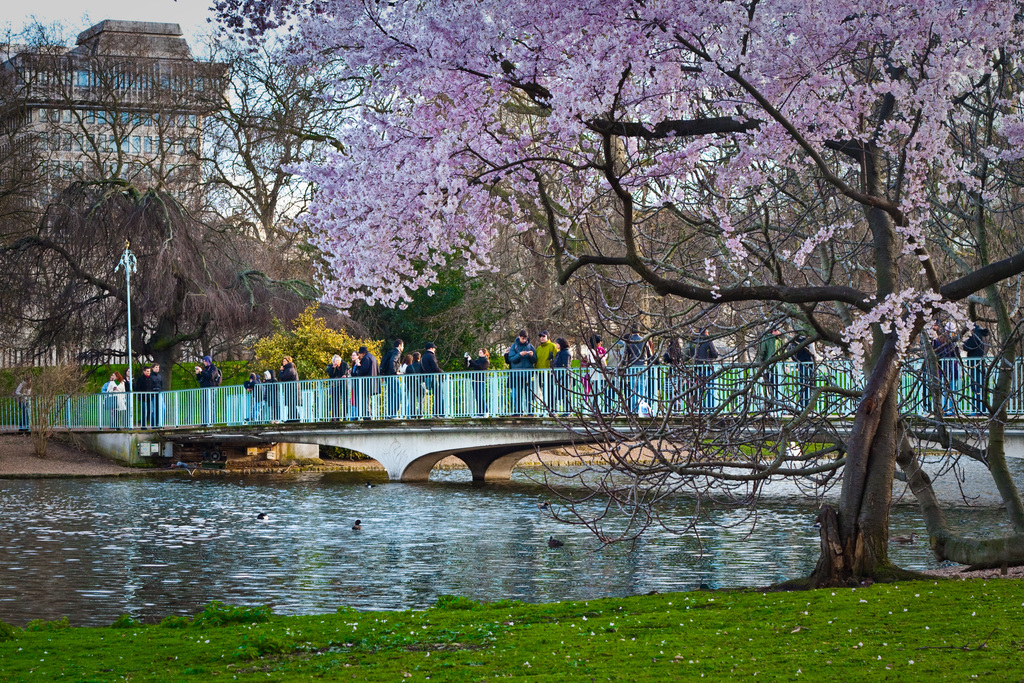
Bridge of Spies
Image by: Garry Knight (Wikimedia Commons)
The Green Park:
Green Park is the most southern park of all of the royal parks. It is also the smallest of all the royal lands and stretches over 40 acres. It is right between St. James’s Park and Hyde Park. The Park connects both the Kensington Gardens and Buckingham palace which is near to creating a huge space of green land. Green Park is also famous for having no lakes, buildings, or attractions so if you looking for endless greens this is the place to go.
Location:
South West London
Background:
Many have said that Green Park was originally used as a graveyard for lepers during medieval times. In early times a family known as the Pulteney family decided to enclose these grounds. Eventually, these flat grounds were handed over to Charles II who converted this space into a royal park and bordered it with brick. Although not a lot is known of the park’s history there are many conspiracies such as it was a place filled with thieves and ghosts and an affair that took place in this park which involved Charles II and was a famous duelling ground.
Attractions:
One of the best attractions of Green Park is the Canada Gate, which is the grand entrance to the park. Surrounded by flower beds and a stunning entrance this is a must-see if visiting this park. The park also has two memorials, the Bomber Command Memorial which is a tribute to the bomber command in the second world war and the other is the Canada Memorial which is for the Canadians who died fighting for the United Kingdom in the Second World War.
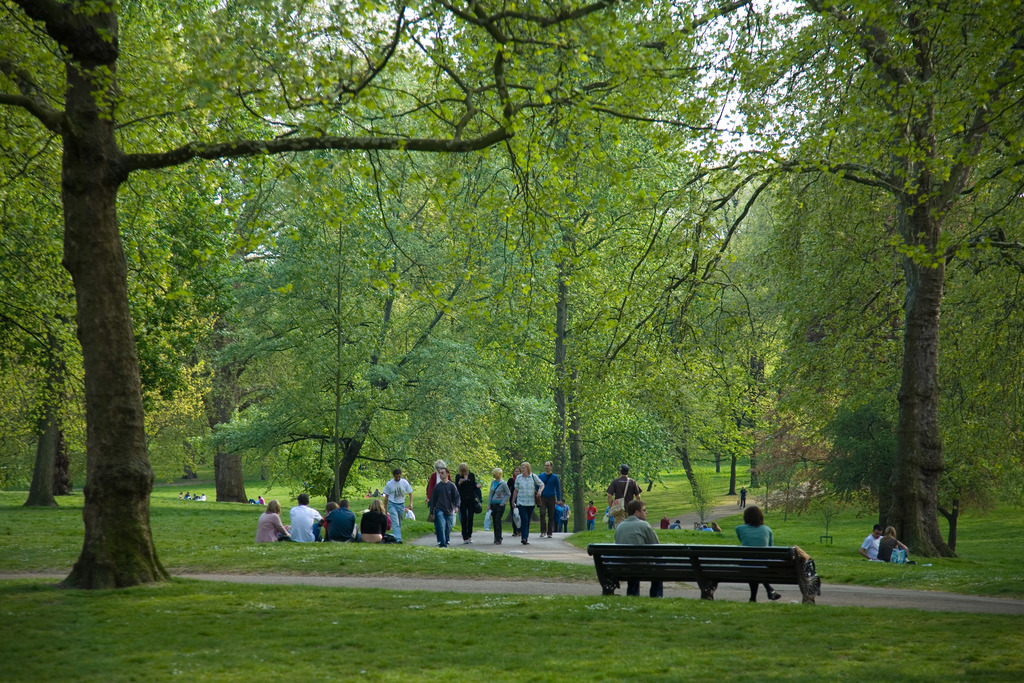
Image by courtesy of Wikimedia Commons
The Regent’s Park and Primrose Hill:
One of London’s most beautiful royal parks due to its surrounding stucco white terraced houses and a wide range of flowers. The park houses one of London’s most amazing flower beds including 12,000 roses and is considered to have one of the best boating lakes in all of London so if you a fan of flowers or boating this park is a must. It is also phenomenal for sports.
Location:
North West London
Background:
The park traces its roots back to the Middle Ages when it first served as a manor. From there it was taken under control by Henry VIII and in little, to no time it was handed over to the state. The King originally used it as a hunting ground and for forestry but later on, it came into use for holdings and dairy production. From there it was renovated and revamped by several different architects and opened up to the public.
Attractions:
Primrose Hill is one of London city’s biggest attractions for once you reach the top of the grassy hill, the views are incredible, and can see most of the city. The Queen Mary Garden is also one of the most magnificent gardens in the whole city with a wide arrangement of flowers, fountains, and well-kept grass. Also known for having a boating lake so if you are ever in the mood to see more of the lake hop across to Regents Park.
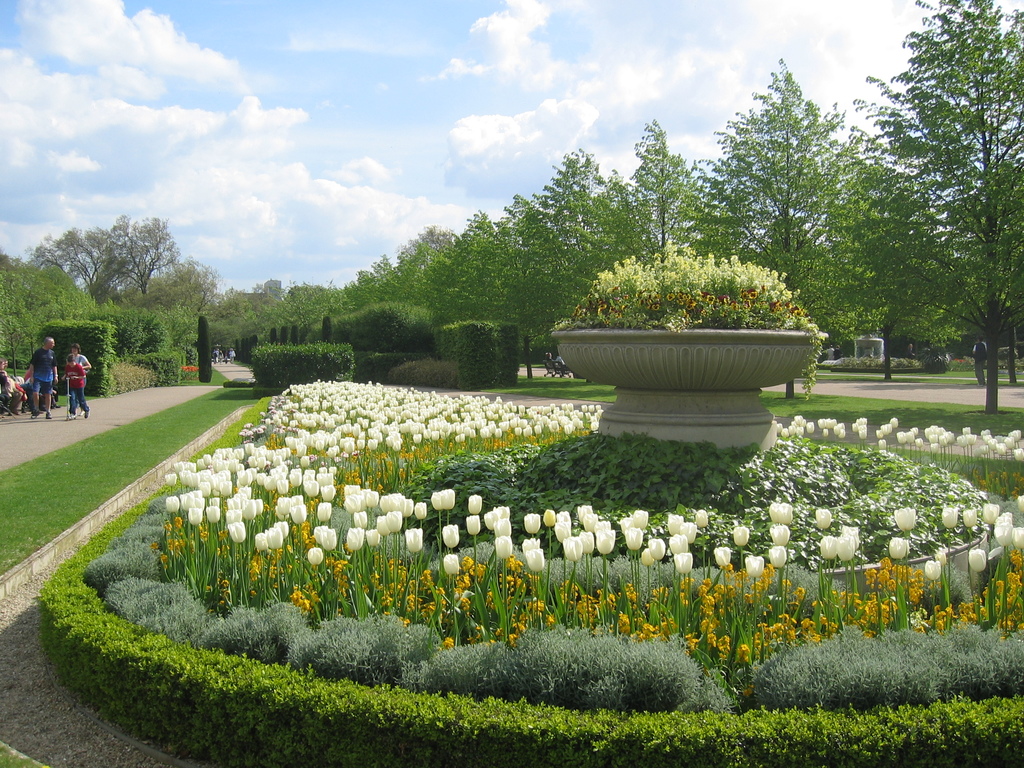
Image courtesy of Wikimedia Commons
Greenwich Park:
Known to have one of the largest single green spaces this area covers over 180 acres. It is also one of Greenwich’s world heritage sites. The park also has immaculate views over multiple different attractions such as the isle of dogs, the City of London, and the River Thames. It is also supposed to undergo multiple renovations after being awarded the National Lottery Grant.
Location:
South East London
Background:
This park was originally an estate belonging to Saint Peter but was eventually given to the Crown in 1427. The park was under the control of Henry VI after it was gifted to him by his uncle. Many believe the park was first used for hawking which is a form of hunting by using a trained falcon. In the 17th century, this space was then landscaped and renovated and turned into a public space.
Attractions:
On the eastern side of the park lies one of the best rose parks. With multiple patches of roses and a backdrop of a Georgian villa, this is a must-see attraction. The park is also home to many deer, so if you feel like doing some nature spotting this is a great place to be. It also has one of the best children’s playgrounds, so the park is not only for adults. It is also home to the Royal Observatory, so if you ever thought about visiting that, then come down to Greenwich Park.
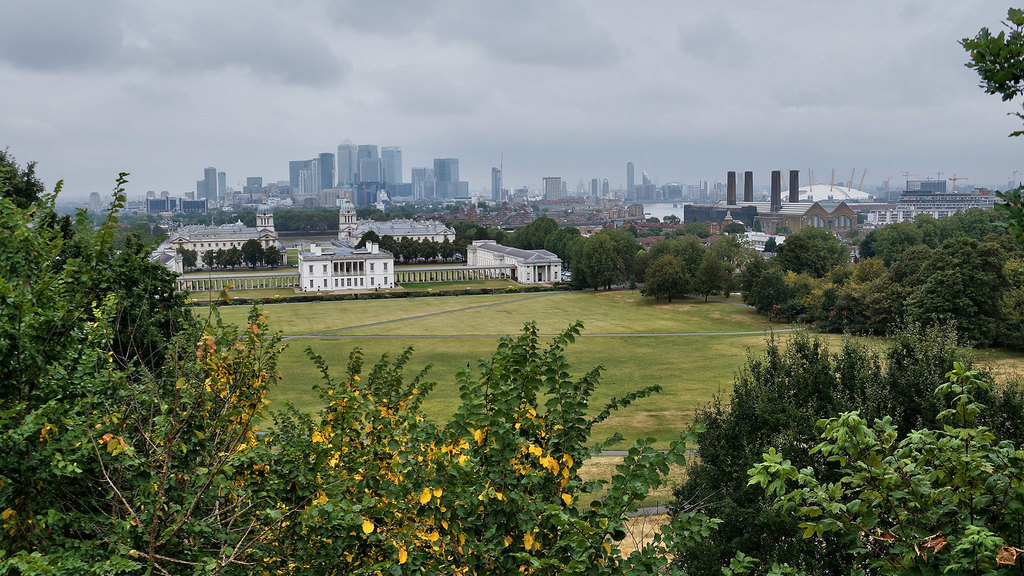
Image by Tatters: (flickr)
Learn more: https://www.royalparks.org.uk/
